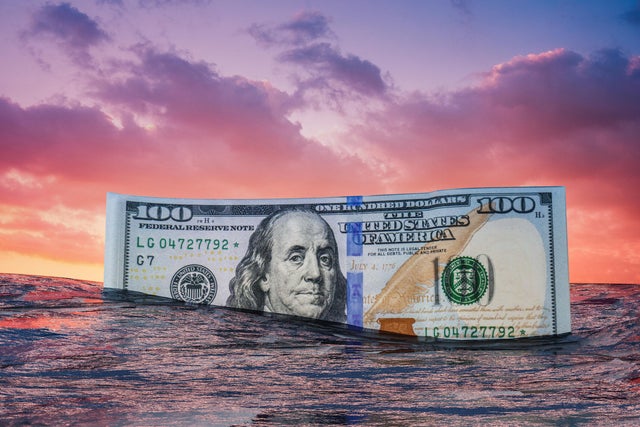5 clear signs that you're drowning in debt this September
The current economic environment has pushed debt problems to a breaking point for millions of Americans. With inflation still a concern, rising costs across housing, food and essential services have forced more people to rely on credit cards and loans to maintain their standard of living. As a result, the total credit card debt nationwide recently reached a new record high of $1.21 trillion, with credit card balances growing at a rapid pace. Persistent inflation isn't the only issue at hand, either. Elevated interest rates and wages that haven't kept pace with inflation have also helped to create a perfect storm for debt accumulation.
What makes the current debt situation particularly dangerous, though, is that many people were already operating on thin financial margins before the economic pressures intensified. With many Americans living paycheck to paycheck, even modest increases in living costs can tip the scales from manageable debt to a genuine financial crisis. So, the question isn't whether today's economic conditions will impact your finances. They almost certainly will. The real question is whether you'll recognize the warning signs before it's too late to course-correct. Below, we'll break down five signs that your debt is a problem this September and how you can go about regaining your financial freedom.
Find out how to start tackling your overwhelming debt problems today.
5 clear signs that you're drowning in debt this September
Here are the red flags that indicate your debt situation has moved from manageable to dangerous this September:
You're making minimum payments only
When your monthly budget only allows for minimum payments across all your credit accounts, you've crossed into dangerous territory. This is especially telling if you were previously paying more than the minimum but had to scale back to accommodate recent expenses. Minimum payments on credit cards will typically cover mostly the interest charges, meaning your actual debt barely decreases each month. If you're stuck in minimum-payment mode, you're essentially treading water while interest charges continue to compound.
Discuss your debt relief options with an expert now.
Your credit utilization is above 30% (and climbing)
Credit utilization, which is the percentage of available credit you're using, is a critical warning sign when it consistently stays above 30%. And, if you're using more than half of your available credit limit, or if you're approaching your maximum limits on any cards, you're also in the debt danger zone. This type of high utilization not only hurts your credit score but also indicates you're relying too heavily on borrowed money to cover daily expenses.
You're borrowing to pay other debts
The moment you start using cash advances, balance transfers or new loans to make payments on existing debts, you've entered a debt spiral. This includes seemingly harmless actions like using one credit card to pay another, taking personal loans to consolidate credit card debt (without addressing spending habits) or borrowing against retirement accounts to manage monthly obligations. Increasing expenses like we're seeing now often trigger this behavior as people desperately try to keep all their accounts current.
Basic living expenses go on credit cards
When groceries, utilities, gas and other necessities are consistently charged to your credit cards because cash isn't available, debt has become your primary funding source for survival. This is different from strategic credit card use for rewards or convenience. This is dependency.
You're losing sleep over money
Physical symptoms of debt stress, like insomnia, anxiety, avoiding phone calls from creditors or debt collectors or refusing to check account balances, indicate that you may be overwhelmed by dangerous debt levels. If you're dreading the mail, avoiding financial conversations with family or feeling panic when thinking about your bills, your debt load has likely moved beyond financial inconvenience to genuine crisis territory.
How to get rid of your expensive debt now
Dealing with your high-rate debt issues can feel insurmountable, but there are actionable strategies to regain control, including:
- Debt consolidation: Consolidating your debt allows you to combine multiple high-rate debts into a single loan, often at a lower interest rate, simplifying payments and reducing interest costs.
- Debt relief programs: Professional debt relief services can negotiate directly with your creditors to try and reduce your balances in return for a lump-sum payment or assist you with other approaches to get rid of debt.
- Debt management: Offered through credit counseling agencies, these plans help structure your monthly payments and may result in lower interest rates and fees on your accounts.
- Credit card forbearance or hardship programs: Some card issuers offer temporary relief options, including paused payments or reduced minimums, especially for those impacted by financial hardships.
The bottom line
Recognizing the signs of unmanageable debt is the first step toward regaining control of your finances. Waiting too long, though, can exacerbate the problem, leading to mounting interest charges, stress and potential credit damage. By taking swift action, whether through debt consolidation, professional guidance, or disciplined repayment, you can start reducing your balances and create a sustainable financial path forward.
